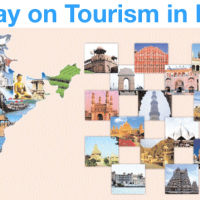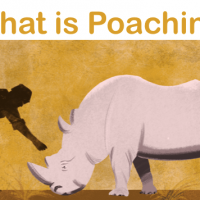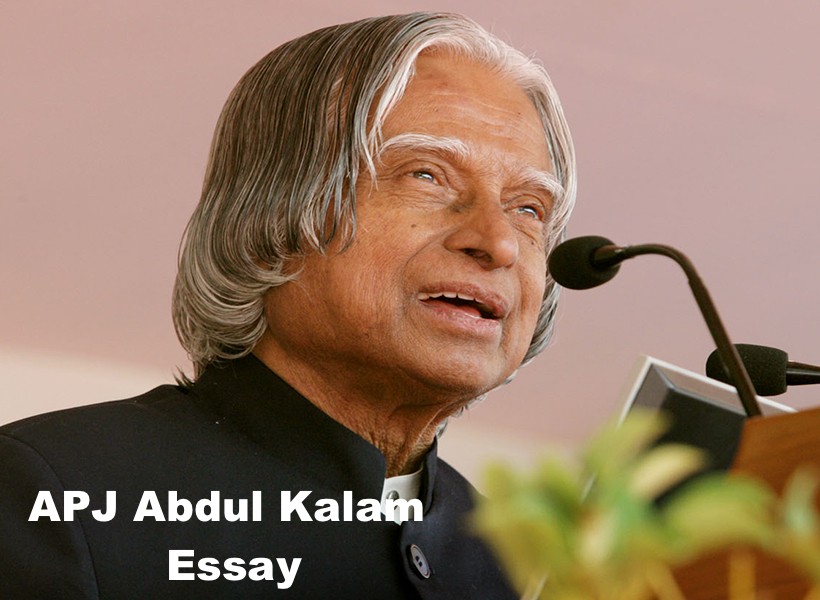Hello Friend This is special category for our small reader who study in school. If they looking for english essay for their school homework or any kind of english essay article then this special category might help you all guyz. in this article we will share Poverty Essay in English . Initially we have published 500 word and 1000 word article for Essay on Poverty in india.

essay on poverty in india
A pledge to eliminate poverty has figured prominently in the A election campaigns of all of India’s political parties since the country gained independence in 1947. Yet the ruling parties of all times have been accused of exploiting poverty rather than putting in place effective measures to tackle it. Poverty in India is not a problem. in fact, it has become a way of life in many areas of the nation. Poverty implies a condition in which a person finds himself unable to maintain a living standard adequate for his physical and mental requirement. He even fails to meet his basic requirements of food and water. Poverty is one of the major problems of India.
It is the root cause of many socio-economic problems including population explosion, unemployment and child labour. and rising graph of crimes. A variety of welfare and food security initiatives, along with rapid economic growth since 1991, has led to sharp reductions in extreme poverty in India.
However, those marginally above poverty line live a fragile economic life. Lack of basic essentials of life such as safe drinking water. sanitation, housing, health and infrastructure as well as malnutrition impact the lives of hundreds of millions of people. High population growth rate is one of the major reasons of poverty in India. This further leads to high level of illiteracy, poor health care facilities and lack of access to financial resources. Also, high population growth affects the per capita income and makes per capita income even lower.
It is expected that population in India will reach 1.5 billion by 2026 and then India will be the nation with the largest population in the world. But India’s economy is not growing at the same pace as its population. This means shortage of – Jobs, About 20 million new jobs would be required for the large Population. Number of poor will keep on increasing if such a big number of jobs are not created.
“A significant fact which stands out is that those parts of India which have been under the British rule for the longest time are the poorest today”: said Jawaharlal Nehru. First Prime Minister of India. The colonial British rule laid the foundation for a long term and chronic poverty in India after they departed. They systematically drained India’s wealth and resources to make their own country prosperous,
Moreover, social inequality leading to exclusion and marginalisation of some communities has also led to some areas being dramatically poorer than the others. Unequal distribution of wealth and faulty economic reforms are also to be blamed for abject poverty in some areas. Dr Manmohan Singh once commented, “India happens to be a rich country inhabited by very poor people. Traditionally, rural India has suffered more pangs of poverty than the urban areas.
Most of the land in the villages is owned by wealthy men on which other farmers work. They are not paid enough and are often exploited. Also, and rather unfortunately.all economic developments have taken place in cities when the majority of the population lives in villages and small towns.
Poverty alleviation should be the main target of the nation so as to make it a prosperous and developed country. Thus, poverty elimination is a matter of fundamental importance. There are two basic pre-requisites of a poverty eradication programme.
Firstly, reorientation of the agricultural relations is needed so that the ownership of land is shared by a larger section of the people. Secondly, no programme of removal of poverty can succeed in an economy plagued by inflation and spiralling rise in the prices of essential goods. A strong political will in the national leadership, to implement the much needed structural reforms, is a must to stop the spread of poverty. The test of our progress will not be in adding more to the abundance of those who have much: it will be in providing enough for those who have too little.
Also Read:
- Essay on Pollution in English
- Village life Essay in English
- Essay on Myself in English
- Essay on My Best Friend
- Essay on My School
Essay on poverty in india For Student & Children
We sometimes gloat over the tremendous progress India has made in several fields. There is no doubt that now India has turned from a food deficit state into a food surplus state. India has a strong industrial base. India has large resources of foreign exchange. India is the largest producer of milk in the world.
Inspite of this, the poor people’s lot is miserable. The fact is that most of the national wealth is just in a few hands. The real prosperity has gone only to the industrial and business rich at the top who get loans of crores of rupees from banks and forget to repay the capital as well as the interest. Avast population of India still sleeps on the pavements. The poor have togo without food even. There is no proper arrangement for drinking water, sewerage, healthcare, education, employment and housing for the poor. A number of schemes in various field e have, no doubt, been started. But red-tapism and corruption torpedo even the well-intentioned schemes,
Although the percentage of the poor is decreasing, yet their total number is increasing.It is because of the rapid increase in population which is one of the most crucial factors in the matter of perpetuity of poverty in India.
According to a World Bank post-reform era of the 1990s analysis, the state of poverty in India continues to be grim with the numbers of both the rural and the urban poor increasing.
“Preliminary evidence through 1997 shows increases in the numbers of both the rural poor (from 224 million in early 1990s to 250 million in the mid 1990s) and the urban poor (from 72 to 73 million) in the 1990s post reform experience, the report says. In 1987, there were 479.9 million poor in South Asia, in 1990, 480.4 million, in 1993514.7 million. These were people living below a dollar a day.
By the head-count index,45.4per cent were poor in 1987, this was reduced marginally to 43 per cent in 1993 but increased slightly to 43.1 per cent in 1993.
The poverty gap (the mean distance below the poverty line; zero for the non-poor) in south Asia was the worst for any region except sub-Saharan Africa -14.1per cent in 1993,12.3 in 1990 and 12.6 in 1993.
So, it is clear that, poverty is one of the greatest problems India is facing today.
According to a newspaper report,
“The number of people living on less than one dollar a day in the world’s least developed countries will reach at least 420 million by 2015 if the current economic trends continue, the United Nations Conference on Trade and Development (UNCTAD) has warned…
The UNCTAD’s Least Developed Countries (LDCs) report 2002, the first analysis of poverty in all LDCs, presents a new set of poverty estimates, showing that extreme poverty in these countries has doubled over the past years to 307 million.”
It is to be noted that many people in India, particularly the poor low income illiterate people do not believe in the population control system and family welfare programmes being pursued at national level. They think that the more members they have in the family, the more hands and earning capacity they have. They forget that each pair of hands brings a mouth and a stomach to feed also. They should be given education and taught to limit their families.
A man shrouded in a life of poverty, can not show his real worth. AsDr.SamuelJohnson, the literary dictaroy of England, has said in his “Vanity of Human wishes”,
“Slow rises worth by poverty depressed”
We know that so many great literary figures like Goldsmith, Charles Lamle, John Keats, Bronte sisters, etc., though famous in the history of English literature, could not reach the pinnacle of glory, at least not in their life, mainly because of poverty. And when any of them got success in their own life, it was on a limited scale and not as grand as it would have been had they been rich.
Unfortunately, poverty dehumanises man and drives him to the thoughts of bondage and slavery. Such a man can not appreciate or understand the real value of freedom. Lord Byron has said in his famous poem, “The Prisoner of Chillon” “My very chains and I grew friends,
For much a long communion tends To make us what we are. Even I Heaved my relief with a sigh.”
– Thee Prisoner of Chillon
The Indian Nobel Laureate, Rabindranath Tagore, says in his Reminiscences”, while comparing the lives of two birds – “The tame bird and “the free bird”.-
“The tame bird was in a cage, the free bird was in the forest.
They met when the time came, it was a decree off ate.
The free bird cries,O my love, let us fly, to the wood.’
The cage bird whispers, ‘come hither, let us both live in the cage’
Says the free bird, Among bars, where is there room to spread one’s wings.’
Alas! cries the cage bird, I should not know where to sit perched in the cage.
Thus, a man dehumanised by poverty cries to find out excuses to remain a slave even when he is freed from bondage. Freedom demands shouldering of responsibilities and a dehumanised person who has been demoralised and frustrated beyond the proper limit finds it an uphill task to take up the challenge of responsibilities and thus loses the chance of all progress and growth in life.
In this respect, the fault lies also with the society and politicians and governments also all across the world. We daily read about suicides by workers, petty shopkeepers and farmers due to poverty. Sometimes, even a brilliant man who has been ignored by all concerned, can feel the burden of life too heavy and feel frustrated and longing to meet death.
Here is the case of Mrs. Bishwasi (60)who was married to Noel Toppo, who played hockey between 1960 to 1969. He was the member of the Indian hockey team that won the gold at the 1966 Bangkok Asian games.
John, Noel’s son, is a disillusioned man. He says that his father had dreamt of opening a hockey academy when he won the gold, but he dropped the idea for the lack of support. John does not want to pursue hockey, as he says, “Despite being an international player, my father could not lead a comfortable life.”
Mrs. Bishwasi’s condition is worse. As per reports, she is beckoning death in an attempt to escape poverty and illness. She has no money to pay for her treatment which is being carried out by the contributions from hospital employees. “Now death is better for me than life. I am fed up with poverty and suffering,” she says.
Mrs. Bishwasi recalls, “When he (her husband, Mr. Noel) won the gold medal the then Prime Minister and President felicitated him. But now there is no one to take care of his family.”She also says, we have knocked on the door of the government but got nothing.”
it is a matter of shame that we should mete out such treatment to our sportsmen and their families and to those who are honest enough not to bungle and prefer to be poor and self-respectful instead of being touts and tainted bookies and others. The description given above pertains to the state of affairs in June, 2002. Let us hope for some improvement and prudence of better sense on all concerned. Mrs. Bishwasi’s is a typical example. She is ready to die of starvation and disease, but she is not ready to beg, not even of government officials. “Do you think lama beggar to keep hanging around government officers?” she asks.
Thus, even while helping the poor, care should be taken that the step is not taken in a way that hurts their sense of self-respect.. Poverty is mainly responsible for the low quality of life most of the Indians are enjoying at present… According to a report published in the Times of India, dated 11th May, 2000
“The under-five mortality in India is 115 compared to 10 in the US. The percent of under weight children in India is 53 compared to less than 1 per cent in the US. There are as many illiterate and poor persons as the entire population of India in 1947. Only two-thirds of children aged 6-14 attended school in 1992- 93 and just over half the population completes more than four years of education.”
Also Read:
- Essay on CV Raman in English
- Essay on Rabindranath Tagore
- Essay on Jawaharlal Nehru
- Subhash Chandra Bose Essay
- Essay on My School in English
- Essay on Family in English
- First Day at School Essay
- Corruption Essay in English
- Women Empowerment Essay
- Republic Day Essay in English
- Mahatma Gandhi Essay in English
- Essay on Family in English
- First Day at School Essay
- Corruption Essay in English
- Women Empowerment Essay
- Republic Day Essay
- Mahatma Gandhi Essay
- Essay on Global Warming
- APJ Abdul Kalam Essay
- Diwali Essay in English





